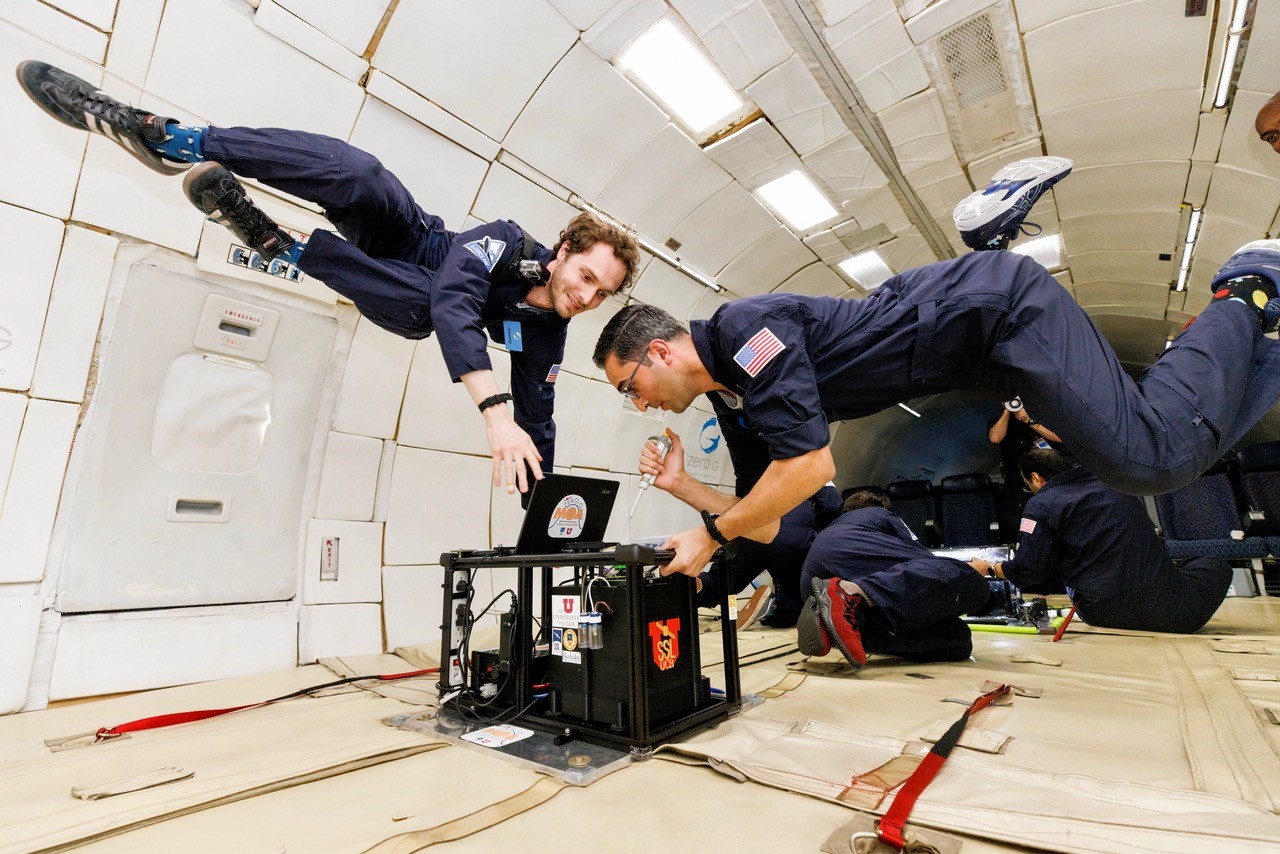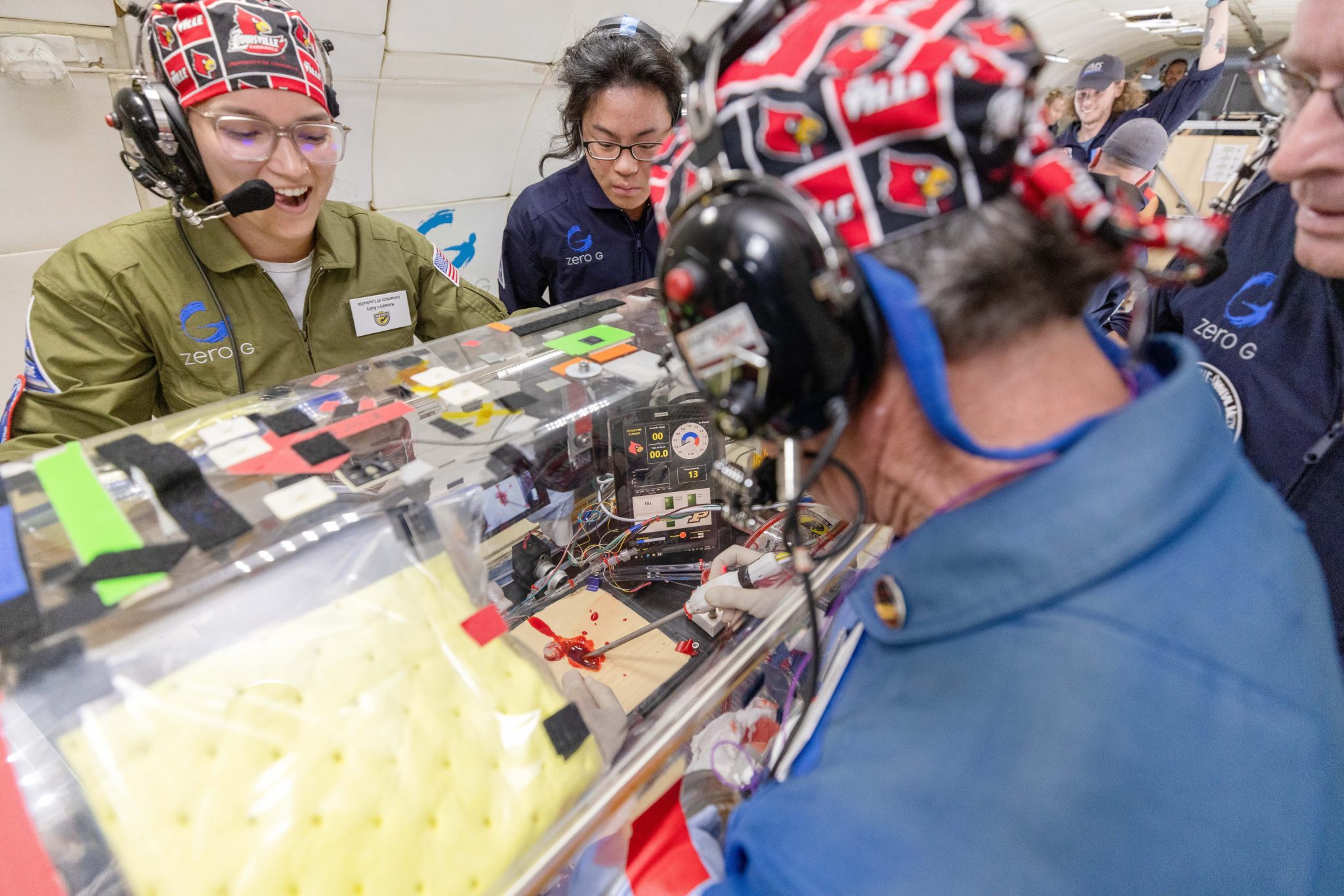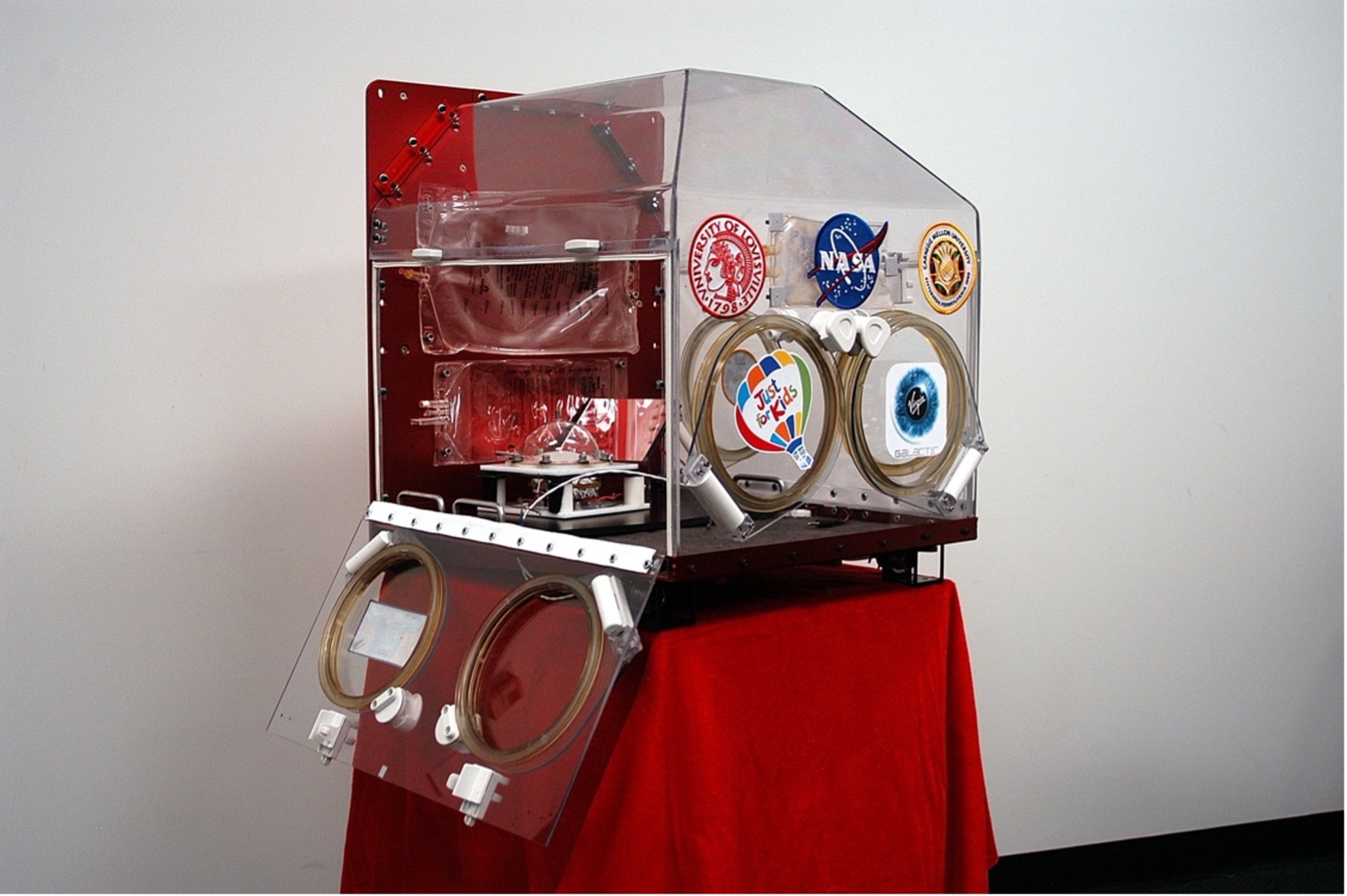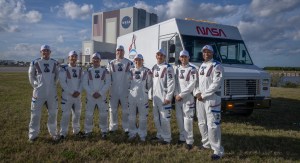
As humans venture further into space and for longer periods of time, medical issues may become more common — and taking a trip back to Earth to treat them less likely. NASA will need technologies to address these issues, and flights supported by NASA’s Flight Opportunities program are providing critical data to advance space-based medical innovations.
Space-Based Surgery and Wound Care
Researchers from the University of Louisville, Orbital Medicine, Purdue University have been working on technologies that aim to control and contain bleeding and facilitate surgery in space. The latest advances in the University of Louisville’s Surgical Fluid Management System (SFMS) were put to the test Nov. 15 and 16 in microgravity. The system flew on Zero Gravity Corporation’s G-FORCE ONE, a modified airplane that provides brief periods of microgravity to enable technology evaluation in one of the trickiest conditions of space.
“Conducting surgery in space is not something we’ve had to contend with yet, but the further we travel from Earth, the more likely it is that we will need expanded medical capabilities,” said George Pantalos, Ph.D., principal investigator for the SFMS at University of Louisville. “And because of the microgravity environment, surgery and wound care in space will be very challenging.”
In the absence of gravity, blood droplets and other fluids from wounds or surgical sites can float into the cabin of a spacecraft, contaminating equipment and potentially introducing disease. The SFMS includes a clear dome that creates a tight seal to a patient’s skin and provides insertion points for surgical instruments without letting fluids escape. A multi-function surgical device (MFSD) performs several tasks in one wand-like instrument: suction, irrigation, illumination, vision, and cautery.
The recent flight tests also included collaboration from Purdue University Principal Investigator Steven Collicott, Ph.D., to add a fluid-air separator device, integrate the full system, and validate its functionality. Researchers captured high-definition video of a simulated bleeding wound and collected important data about the new blood-air separation capability – data that will help inform future upgrades and advances to the system.
Astronaut Health Monitoring for Space Missions
The surgical system was in good company on the recent flights, alongside other technologies that could be used to help monitor astronaut health. Researchers from the University of California – Berkeley and the University of Utah flew their “Lab-on-a-Chip” technology – a programmable microfluidic analyzer designed to autonomously perform chemical analysis and clinical assays for tasks like astronaut calcium loss monitoring, inflammation, or infectious disease detection, all in a compact 10 cm x 15 cm x 15 cm (about 4-inch x 4-inch x 6-inch) package.
“For long-duration human spaceflight missions to the Moon, Mars, and other destinations, there is a need to monitor the state of astronaut health and, when necessary, make the appropriate interventions in response to health changes or the onset of disease,” said Richard Mathies, Ph.D., principal investigator for the Lab-on-a-Chip.
Large labs and equipment required for conducting clinical analyses here on Earth are not practical in a spaceflight setting. Instead, astronauts rely on smaller systems like WetLab-2 (currently in operation on the International Space Station) to monitor signals of declining health. As small lab systems become even more miniaturized and fully autonomous, they may be applicable to even more space-based uses, such as sample analysis conducted as part of investigations for signs of life on other planets and moons.
“These suborbital parabolic flights are critical to demonstrating the Lab-on-a-Chip capabilities in a challenging zero gravity environment where fluids behave very differently,” said Anna Butterworth, Ph.D., at the University of California – Berkeley and Jungkyu Kim, Ph.D., at the University of Utah, co-investigators for the project. “This is a key step to successfully developing dedicated microfluidic systems for clinical health monitoring in space.”
Other NASA-Supported Technologies Aboard G-FORCE ONE

The recent NASA-supported parabolic flights took place Nov. 1-3 and Nov. 15-18 and also provided testing for:
Autonomous Sampling for Biological Research
Mayo Clinic’s Autonomous Technology for Research in Suborbital Microgravity (ATOM) project collected data about the biological impact of spacecraft acceleration, temperature, and pressure.
Cryogenic Fluid Management and Modeling
Purdue University flew reduced gravity experiments to measure cryogenic two-phase heat transfer coefficients, while University of Florida flew an experiment designed to estimate heat and mass transfer rates of cryogenic fluids. Massachusetts Institute of Technology flew experiments that aim to inform the sizing and design of propellant systems.
Affordable Small Spacecraft Innovation
Researchers from University of California – Davis tested technology designed to provide three-axis attitude control for CubeSats using low-cost, commercial off-the-shelf hard disk drives – work that could make small spacecraft research more affordable and accessible.
Additive Manufacturing
University of California – Berkeley aims to advance methods for additive manufacturing (3D printing) using computed axial lithography. The team flew hardware designed to enable printing of biomaterials (e.g., human tissues) and engineering components.
Innovative Space-Based Optical Components
As part of the Fluidic Telescope Experiment (FLUTE), NASA’s Ames Research Center and Israel Institute of Technology tested a method that leverages the surface tension of liquids to create ultra-smooth optical surfaces for potential future telescope and optical applications.
About NASA’s TechFlights Awards
These flights were supported by NASA’s TechFlights awards, which provide funding for promising space technologies for testing on commercial flight vehicles. Managed by NASA’s Flight Opportunities program, the next TechFlights solicitation is expected in early 2023. Subscribe to the Flight Opportunities newsletter for announcements about TechFlights and other opportunities to access flight tests.
By Nicole Quenelle
Armstrong Flight Research Center
































